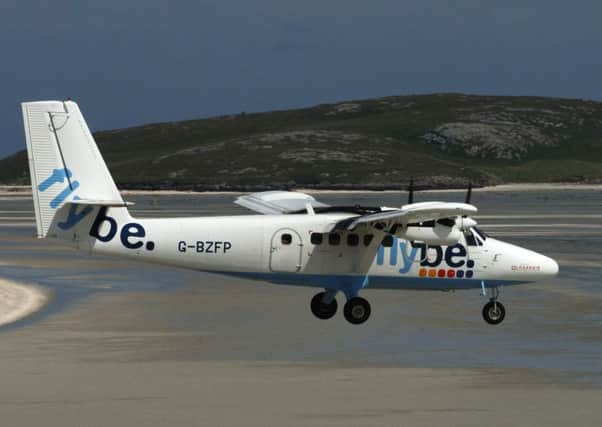Alastair Dalton: Could competition shake up island air travel?


The likes of Ryanair have seen off rivals through sheer ruthlessness in cutting costs, driving hard bargains with airports and offering bargain basement fares.
The success of such low-cost airlines in Europe could be about to be repeated for transatlantic routes with Norwegian launching cheap flights from Edinburgh to the US next week.
Advertisement
Hide AdAdvertisement
Hide AdHowever, for Scots flying within their own country, the price remains resolutely high.
Visitors to the Western and Northern Isles from the main cities can typically pay as much as a flight across the Continent or further.
The problem is obvious - the relatively low demand for air travel to the sparsely-populated fringes of the country.
There have been too few passengers, and insufficient airport handling capacity, for the medium-size aircraft which the budget carriers use.
So that means small - in some cases tiny - planes fly to the islands, which make for a high cost per passenger, even taking into account government support for the routes and discounts for locals.
However, could this all be about to change following Tuesday’s dramatic news that Flybe, which currently partners Loganair on these island links, will now compete against it? It promises to be the biggest battle on the routes for decades.
Loganair, which has had a franchise deal with Flybe to operate its Highlands and Islands network for nine years, is unsurprisingly furious.
I understand Flybe wanted another £3 million a year to renew the deal, and when negotiations broke down last year, announced the contract would be “terminated” in August.
Advertisement
Hide AdAdvertisement
Hide AdI’m told Flybe had been casting around for a new airline partner to fly some of the routes before signing up Eastern Airways.
Humberside-based Eastern does not exactly have the highest of profiles in Scotland, and flies only between Aberdeen and Stornoway and Wick, along with oil industry flights, such as to Shetland.
On the face of it, this is good news for island passengers, who stand to gain more frequent flights on five routes from Stornoway, Kirkwall and Sumburgh to Glasgow, Edinburgh and Aberdeen.
There may also be shorter flight times - although this is disputed - and perhaps cheaper fares.
However, it remains to be seen whether Flybe/Eastern’s prices will be any lower when extras like baggage are added, which are included in Loganair’s fares.
Even so, the battle lines are drawn. On one side is Loganair’s ambitious managing director Jonathan Hinkles, who returned to the airline last year after four years with Virgin Atlantic.
Already relishing the prospect of “Scotland’s Airline” going it alone - or “Coming Home” according to its new branding - Hinkles has declared he is “up for the fight”.
Squaring up to him is Flybe’s chief executive Christine Ourmières-Widener, who took over in January and is equally determined to turn round the fortunes of the airline, which yesterday swung to a £20 million annual loss.
Advertisement
Hide AdAdvertisement
Hide AdLoganair has already improved its past woeful punctuality, and a rival entering the market should help keep it on its toes.
But unless the new competition leads to a surge in passenger numbers, a revolution in islands’ air travel may be yet to take off.